 2003 Mitsubishi Lancer VIII Wagon Dimensions, Size & Specs
2003 Mitsubishi Lancer VIII Wagon Dimensions, Size & SpecsMeasurements of the 2003 Mitsubishi Lancer VIII Wagon, engineered for optimal performance and comfort
| Dimensions | |
|---|---|
| Length: | 4485 mm176.6 in14.7 ft |
| Width: | 1695 mm66.7 in5.6 ft |
| Height: | 1450-1480 mm57.1-58.3 in4.8-4.9 ft |
| Trunk Capacity: | 400 liter14.1 cu ft |
| Trunk Capacity (Max): | 1200 liter42.4 cu ft |
| Weight Specifications | |
| Curb Weight: | 1275-1360 kg2811-2998 lbs |
| Maximal permitted Weight: | 1780 kg3924 lbs |
| Tire Specifications | |
| Rims Sizes: | 15-inch rims:
|
| Tire Sizes: |
|
The Mitsubishi Lancer VIII Wagon, produced from 2003 to 2009, is a versatile station wagon known for its balanced size and practicality. Measuring 4485 mm (176.6 inches) in length and 1695 mm (66.7 inches) in width, this wagon offers a compact yet spacious footprint suitable for urban and family use. The height ranges between 1450 mm to 1480 mm (57.1 to 58.3 inches), providing sufficient interior headroom while maintaining a sleek profile for efficient driving and parking.
With a curb weight ranging from 1275 to 1360 kg (2811 to 2998 lbs) and a maximum weight capacity of 1780 kg (3924 lbs), the Lancer VIII Wagon balances performance and load capacity effectively. Its luggage space is notably versatile, offering 400 liters (14.1 cubic feet) of cargo volume with rear seats upright, which expands impressively to 1200 liters (42.4 cubic feet) when the rear seats are folded down, making it an excellent option for carrying larger loads or gear for extended trips.
The vehicle is equipped with rim sizes varying from 6J x 15 up to 6.5J x 16, with tire sizes including 195/60 R15 and 195/50 R16, ensuring a stable and comfortable ride. This feature set complements the Lancer VIII Wagon’s role as a practical yet enjoyable car for daily commuting and weekend getaways.
Overall, the Mitsubishi Lancer VIII Wagon (2003-2009) blends adaptable storage, manageable dimensions, and moderate weight to provide a well-rounded station wagon experience. It remains a popular choice for those looking for reliability paired with functional space in the compact wagon segment.
Discover the standout features that make the 2003 Mitsubishi Lancer VIII Wagon a leader in its class
Have a question? Please check our knowledgebase first.
The Mitsubishi Lancer VIII Wagon produced from 2003 to 2009 features an overall length of 4485 mm (176.6 inches), a width of 1695 mm (66.7 inches), and a height that varies between 1450 mm and 1480 mm (57.1 to 58.3 inches). These dimensions position the Lancer VIII Wagon well within the compact station wagon segment, offering a blend of maneuverability and interior space. Its relatively modest size makes it practical for urban driving, while still providing ample room for passengers and cargo. The height variation can be attributed to different trims or suspension setups, potentially influencing vehicle stance and internal headroom.
The curb weight of the Mitsubishi Lancer VIII Wagon ranges from 1275 kg to 1360 kg (2811 to 2998 pounds), depending on the specific trim and equipment level. The maximum gross vehicle weight (GVW), which includes the vehicle, passengers, cargo, and fuel, is rated at 1780 kg (3924 pounds). This weight range reflects a balance between the car's construction materials and its design aimed at achieving competitive fuel efficiency and handling characteristics. Vehicle weight influences performance aspects such as acceleration, braking, and fuel consumption, making the Lancer VIII Wagon a reasonably lightweight option in the station wagon category.
The Mitsubishi Lancer VIII Wagon offers a practical luggage capacity of 400 liters (approximately 14.1 cubic feet) with the rear seats in their upright position, suitable for everyday cargo such as groceries, small suitcases, or sports gear. When the rear seats are folded down, this capacity expands significantly to 1200 liters (around 42.4 cubic feet), allowing for much larger items or increased cargo volume. This flexibility makes the Lancer VIII Wagon ideal for families or individuals who occasionally require additional space for transporting bulky goods or luggage during travel.
The Mitsubishi Lancer VIII Wagon supports a variety of rim sizes, including 6J x 15, 6.5J x 16, and 15X6J, which correspond to different wheel diameters and widths. The typical tire sizes designed to fit these rims are 195/60 R15 and 195/50 R16. These tire sizes ensure a balance between comfort, handling, and fuel economy, optimized for the vehicle’s suspension and performance characteristics. When replacing tires or rims, it's essential to maintain compatibility to ensure safety and preserve the intended driving dynamics of the car.
The Mitsubishi Lancer VIII Wagon's height ranges from 1450 mm to 1480 mm (57.1 to 58.3 inches), depending on specific variants or options included in the vehicle. This moderate height provides sufficient headroom for passengers, contributing to overall occupant comfort. At the same time, the low profile enhances aerodynamics and stability on the road. The relatively low height also aids when loading and unloading cargo or accessing roof-mounted accessories such as luggage racks. This balance makes the vehicle versatile for both city commuting and longer trips.
Yes, the Mitsubishi Lancer VIII Wagon typically fits into a standard residential garage. With a length of 4485 mm (176.6 inches), width of 1695 mm (66.7 inches), and height up to 1480 mm (58.3 inches), it comfortably fits within the typical dimensions of most home garages. Standard garages usually accommodate vehicles up to about 2 meters (79 inches) in width and 5 to 6 meters (197 to 236 inches) in length, so the Lancer VIII Wagon's size ensures it can be parked easily without concerns about tight clearances or maneuverability challenges indoors.
Compared to its predecessor, the Mitsubishi Lancer VII Wagon, the Lancer VIII Wagon (2003-2009) generally exhibits a slightly larger footprint. While exact dimensions vary somewhat by year and trim, the Lancer VIII's increased length of 4485 mm (176.6 inches) and width of 1695 mm (66.7 inches) contribute to a more spacious interior and improved cargo space. The height variation also indicates enhanced flexibility in design, potentially accounting for improved ride comfort. This growth aligns with automotive trends of the early 2000s, where newer generations often expanded to offer more comfort and practicality without compromising driving agility.
In comparison to other compact station wagons from the early to mid-2000s, the Mitsubishi Lancer VIII Wagon holds its own regarding dimensions and utility. Its length of 4485 mm (176.6 inches) and luggage capacity—400 liters (14.1 cubic feet) standard and up to 1200 liters (42.4 cubic feet) with seats folded—are competitive with rivals such as the Subaru Impreza Wagon or Volkswagen Golf Variant. These competitors offer similar cargo flexibility and passenger space, but the Lancer VIII Wagon distinguishes itself by offering a good balance between compact urban dimensions and usable interior volume, making it suitable for families and active lifestyles.
The curb weight of the Mitsubishi Lancer VIII Wagon fluctuates between 1275 kg and 1360 kg (2811 to 2998 pounds), depending on factors like trim level, optional equipment, and drivetrain. Variations occur depending on whether the model includes additional features such as upgraded safety packages, infotainment systems, or performance enhancements. The spread in weight also impacts aspects like fuel efficiency, acceleration, and handling, with lighter models tending to offer brisker responsiveness and improved mileage. This range is typical for compact station wagons of the era, balancing equipment richness with driving dynamics.
The Mitsubishi Lancer VIII Wagon (2003-2009) is designed as a versatile compact station wagon combining sporty styling with practical utility. Key features include a spacious cargo area that expands from 400 liters (14.1 cubic feet) to 1200 liters (42.4 cubic feet) with fold-flat rear seats, allowing flexibility for carrying larger loads. Its suspension and chassis tuning emphasize a balance between comfort and responsive handling, appealing to drivers seeking agility without compromising everyday usability. The wagon body style adds headroom and roof rails in some trims, enhancing the car’s cargo-carrying capabilities. The design reflects Mitsubishi's approach to creating a vehicle suitable for both family use and an active lifestyle, with reasonable fuel economy and reliable mechanical components.
Discover similar sized cars.

| Production: | 1998-2002 |
|---|---|
| Model Year: | 1997 |
| Length: | 4514 mm177.7 in |
| Width: | 1700 mm66.9 in |
| Height: | 1433 mm56.4 in |
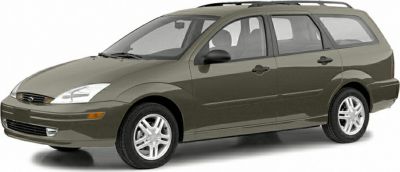
| Production: | 1999-2004 |
|---|---|
| Model Year: | 2000 |
| Length: | 4450-4526 mm175.2-178.2 in |
| Width: | 1699 mm66.9 in |
| Height: | 1430-1448 mm56.3-57.0 in |
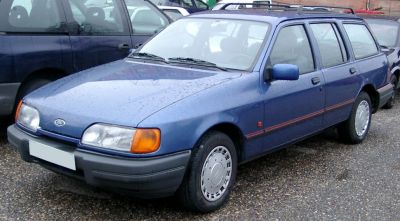
| Production: | 1987-1993 |
|---|---|
| Model Year: | 1987 |
| Length: | 4511 mm177.6 in |
| Width: | 1720 mm67.7 in |
| Height: | 1428 mm56.2 in |
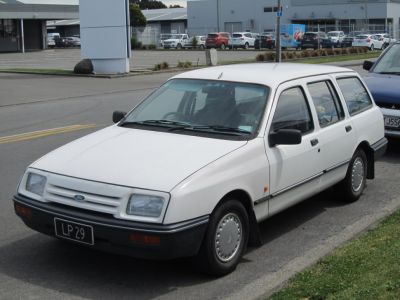
| Production: | 1982-1986 |
|---|---|
| Model Year: | 1983 |
| Length: | 4451-4511 mm175.2-177.6 in |
| Width: | 1720 mm67.7 in |
| Height: | 1428 mm56.2 in |
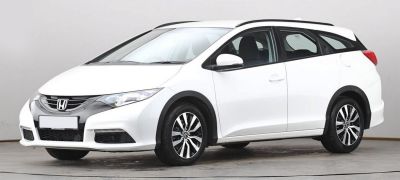
| Production: | 2013-2014 |
|---|---|
| Model Year: | 2013 |
| Length: | 4535 mm178.5 in |
| Width: | 1770 mm69.7 in |
| Height: | 1480 mm58.3 in |
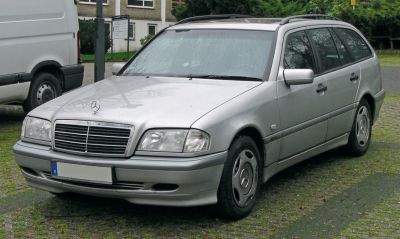
| Production: | 1996-2001 |
|---|---|
| Model Year: | 1997 |
| Length: | 4487-4516 mm176.7-177.8 in |
| Width: | 1723 mm67.8 in |
| Height: | 1430-1460 mm56.3-57.5 in |
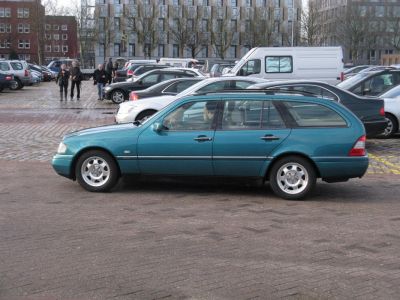
| Production: | 1995-1997 |
|---|---|
| Model Year: | 1996 |
| Length: | 4487 mm176.7 in |
| Width: | 1720 mm67.7 in |
| Height: | 1460 mm57.5 in |
